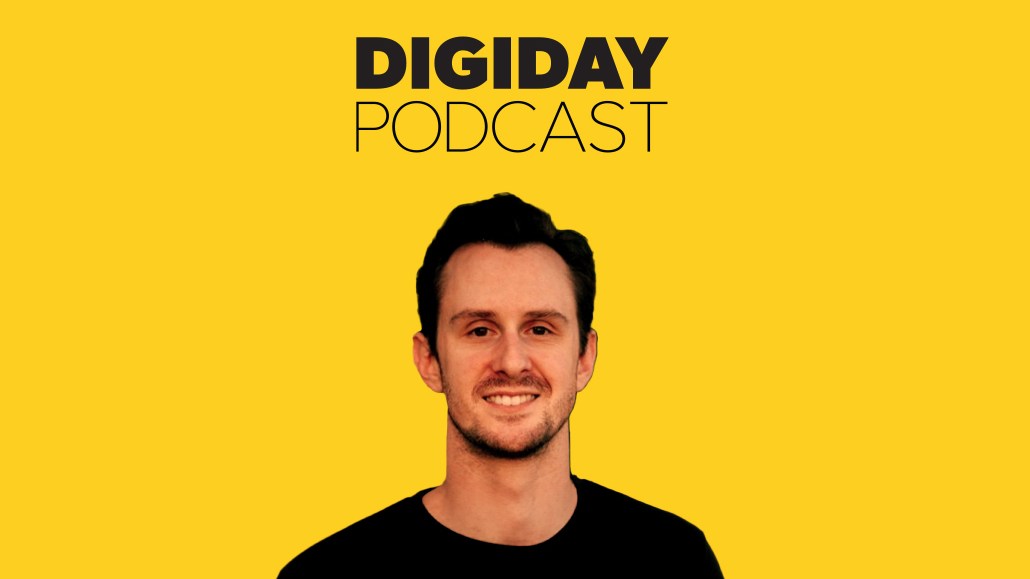How creators are becoming their own networks with Night agency’s David Huntzinger

Subscribe: Apple Podcasts • Spotify
The wheeling and dealing of the creator economy is changing as its maturation continues.
The space is growing up as brands like Blue Apron are in-housing their influencer strategies to curb costs and build better relationships with creators and platforms like YouTube, which recently began testing dynamic ad insertions, are allowing creators to monetize their older videos.
“The way that you’re [creators are] interfacing with the market is no different than, I would say, a lot of TV networks,” said David Huntzinger, svp and talent manager at Night, a talent management firm that manages creators including Kai Cenat, Hasan Piker, and Sam and Colby. Huntzinger recently joined the Digiday Podcast. He added, “The benefit of being a creator is that you own your own distribution.”
On this episode of the Digiday Podcast, Huntzinger joins hosts Kimeko McCoy, senior marketing reporter, and Tim Peterson, executive editor, video and audio, about the creator economy’s inflection point and maturation, as well as what YouTube’s dynamic ad insertion means for creator monetization.
Also in this episode, Google’s Privacy Sandbox saga finally comes to an end, the rise of agentic AI introduces ad context protocol, Pinterest is reducing its AI slop and Meta withdraws from the Media Rating Council (MRC).
This interview has been lightly edited for clarity.
What creators care about in brand deals
What creators care about outside of having a good deal and making some money on these ads is that they want the audience to feel as though they’re not just being shoved and shoveled more advertising online. They want it to feel organic. They need it to feel like it’s a part of their brand, that their brand can stand for what they’re presenting.
On how he’s dealing with brands versus agencies
Agencies dominate a lot of the YouTube market in particular. Blue chip brands and some of those marquee brands in the space, you’re likely cutting those bigger campaigns directly with the brand. But if we’re talking about day-to-day YouTube ad integrations, a lot of that’s done through the DR [direct response] agencies. So they’re, again, economies of scale.
When you’re really trying to sell a lot of inventory and you have creators who, on the low end, maybe they do a video a month. On the high end, some creators are doing four videos a month and they want everything sponsored. When we’re talking like 36 videos a year, that’s a lot of inventory. That’s a heavy commitment. So having agencies bulk buy that as a valuable resource — a lot of that inventory still runs through the agencies for that reason specifically.
YouTube’s dynamic ad insertions
It gives you so many more opportunities with brands and how you frame things, how you structure a deal. I have creators who are very particular about — over the past handful of years when they’ve done deals — they want to make sure that there’s a time threshold when they can definitely take that ad off. There are creators who’ve been thinking about this for a long time already.
This is, I think, YouTube catching up with those trends and thinking about it a little bit more strategically on their end too. It opens up a ton of different avenues for the creator on how they interact with brands. It gives brands different opportunities to window content or to look at old pieces of inventory that are going to be a little bit cheaper to buy. It gives you a lot more flexibility in your deal making.
More in Marketing

Marketers are keen to use generative AI in ad campaigns, but hidden costs lurk
Marketers across the industry want to use AI to cut down on time spent in creative production. It’s not so simple in practice.

2025 was rough for Target. It could also be the year when its turnaround began
Much of the front half of the year for Target was defined by the company’s decision in January to pull back on DEI initiatives.

How brands shifted marketing and media strategies through year of tariffs
Marketers share how they navigated the maze of tariffs and regulatory changes this year.





